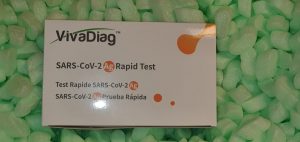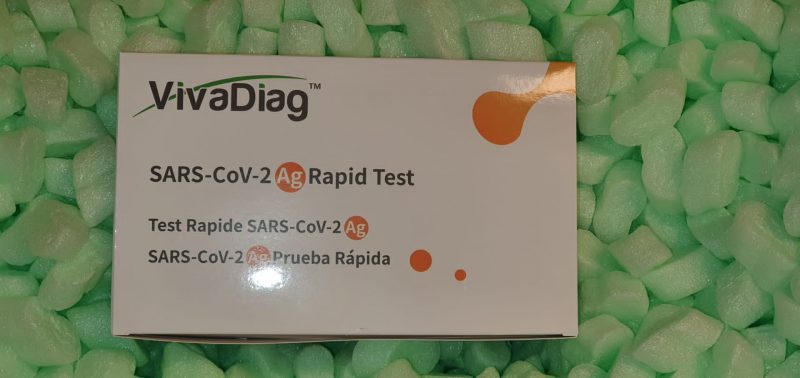Previously, we proposed the speculation that similarities in the inflammatory response noticed in pimples vulgaris and degenerative disc illness (DDD), particularly the central position of interleukin (IL)-1β, could also be additional proof of the position of the anaerobic bacterium Cutibacterium (beforehand Propionibacterium) acnes in the underlying aetiology of disc degeneration.
To examine this, we examined the upregulation of IL-1β, and different identified IL-1β-induced inflammatory markers and neurotrophic elements, from nucleus-pulposus-derived disc cells contaminated in vitro with C. acnes for up to 48 h. Upon an infection, vital upregulation of IL-1β, alongside IL-6, IL-8, chemokine (C-C motif) ligand 3 (CCL3), chemokine (C-C motif) ligand 4 (CCL4), nerve progress issue (NGF) and brain-derived neurotrophic issue (BDNF), was noticed with cells remoted from the degenerative discs of eight sufferers versus non-infected controls.
Expression ranges did, nevertheless, depend upon gene goal, multiplicity and interval of an infection and, notably, donor response. Pre-treatment of cells with clindamycin prior to an infection considerably diminished the manufacturing of pro-inflammatory mediators. This examine confirms that C. acnes can stimulate the expression of IL-1β and different host molecules beforehand related to pathological modifications in disc tissue, together with neo-innervation. While nonetheless controversial, the position of C. acnes in DDD stays biologically credible, and its capacity to trigger illness seemingly displays a mix of elements, significantly individualised response to an infection.
A 60-year-old man was hospitalized as a result of of numbness and weak spot in the proper higher limb. Magnetic resonance imaging revealed a big mass in the proper higher lobe invading the proper eighth cervical and first thoracic nerve root. Biopsy pathology confirmed major lung adenocarcinoma with a scientific stage of cT4N0M0 IIIA, destructive for anaplastic lymphoma kinase fusion gene and epidermal progress issue receptor mutations however optimistic for programmed demise ligand 1 (3%).
Neoadjuvant tislelizumab and chemotherapy have been supplied to this affected person with Pancoast tumor, and tumor shrinkage of 71% was achieved. After the operation, surgical pathology indicated pathologic full response (pCR). Circulating tumor cells testing was destructive after the first adjuvant remedy. In this case, we offer real-world proof of encouraging pCR with neoadjuvant tislelizumab and chemotherapy for a affected person with Pancoast tumor.
The optimum focus of VEGF and NGF on SCAP viability was assessed and launched to SCAPs for 6-24 hours. SCAPs have been additionally challenged with E. coli lipopolysaccharide (LPS). mRNA expression of DSPP, DMP1, TGFB1, OCN, SP7, and TWIST1 was examined by way of quantitative reverse transcription-polymerase chain response. Immunohistochemistry was used to confirm protein expression. In addition, complete RNA from NGF-treated SCAPs in the presence or absence of LPS was extracted for RNA sequencing.
Effects of mixture remedy with transcranial magnetic stimulation and bone marrow mesenchymal stem cell transplantation or Raf inhibition on spinal twine harm in rats
Spinal twine harm (SCI) stays a worldwide problem due to restricted remedy methods. Transcranial magnetic stimulation (TMS), bone marrow mesenchymal stem cell (BMSC) transplantation and downregulation of Raf/MEK/ERK signaling successfully enhance SCI. The mixture of BMSCs and TMS shows synergistic results on vascular dementia. However, whether or not TMS shows a synergistic impact when mixed with BMSC transplantation or Raf inhibitor (RafI) remedy for the remedy of SCI is just not utterly understood.
The current examine aimed to examine the therapeutic impact of monotherapy and mixture remedy on SCI. In the current examine, 8‑week‑previous feminine Sprague Dawley rats have been used to set up a mannequin of SCI utilizing the weight‑drop methodology adopted by remedy with monotherapy (TMS, BMSCs or RafI) or mixture remedy (TMS+BMSCs or TMS+RafI).
The impact of monotherapy and mixture remedy on locomotor perform, pathological alterations, neuronal apoptosis and expression of axonal regeneration‑related elements and Raf/MEK/ERK signaling‑related proteins in the spinal twine was analyzed by Basso, Beattie and Bresnahan (BBB) scoring, hematoxylin and eosin staining, TUNEL‑neuronal nuclei (NeuN) staining and immunofluorescence or western blotting, respectively.
The outcomes demonstrated that in contrast with untreated SCI mannequin rats, monotherapy considerably enhanced locomotor purposeful restoration, as evidenced by larger BBB scores, and barely alleviated histopathological lesions of the spinal twine in SCI mannequin rats. Furthermore, monotherapy markedly suppressed neuronal apoptosis and promoted axonal regeneration, in addition to inhibiting astroglial activation in SCI mannequin rats.
The aforementioned outcomes have been demonstrated by considerably decreased numbers of apoptotic neurons, markedly decreased expression ranges of glial fibrillary acidic protein (GFAP), considerably elevated numbers of NeuN+ cells, markedly elevated expression ranges of progress‑related protein 43 (GAP‑43) and considerably upregulated nerve progress issue (NGF) and mind derived neurotrophic issue (BDNF) expression ranges in monotherapy teams (excluding the RafI monotherapy group) in contrast with untreated SCI mannequin rats.
In addition, monotherapy markedly suppressed activation of the Raf/MEK/ERK signaling pathway, as evidenced by considerably diminished p‑Raf/Raf, p‑MEK/MEK and p‑ERK/ERK protein expression ranges in monotherapy teams (excluding the BMSC monotherapy group) in contrast with untreated SCI mannequin rats. Notably, mixture remedy additional alleviated SCI‑induced spinal twine lesions and neuronal apoptosis, elevated GAP‑43, NGF and BDNF expression ranges, downregulated GFAP expression ranges and inhibited activation of the Raf/MEK/ERK signaling pathway in SCI mannequin rats in contrast with the corresponding monotherapy teams.
[Linking template=”default” type=”products” search=”Anti- Nerve Growth Factor Antibody” header=”2″ limit=”132″ start=”2″ showCatalogNumber=”true” showSize=”true” showSupplier=”true” showPrice=”true” showDescription=”true” showAdditionalInformation=”true” showImage=”true” showSchemaMarkup=”true” imageWidth=”” imageHeight=””]
Therefore, it was hypothesized that in contrast with monotherapy, mixture remedy displayed an improved therapeutic impact on SCI by additional suppressing Raf/MEK/ERK signaling. The outcomes of the current examine offered an essential foundation for the scientific utility of mixture remedy.

